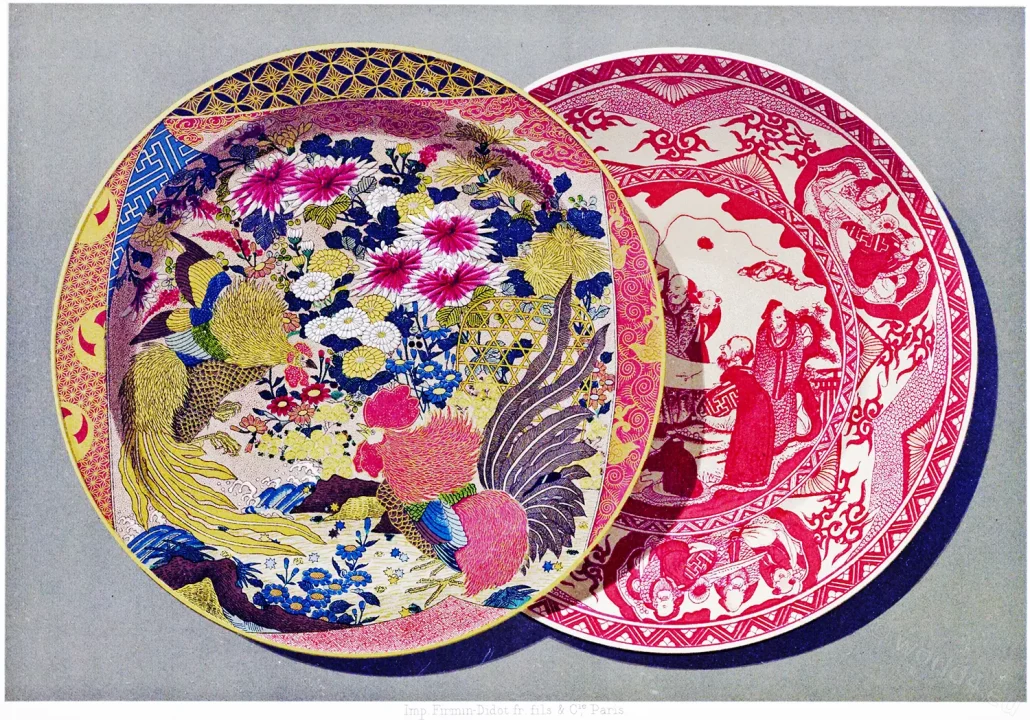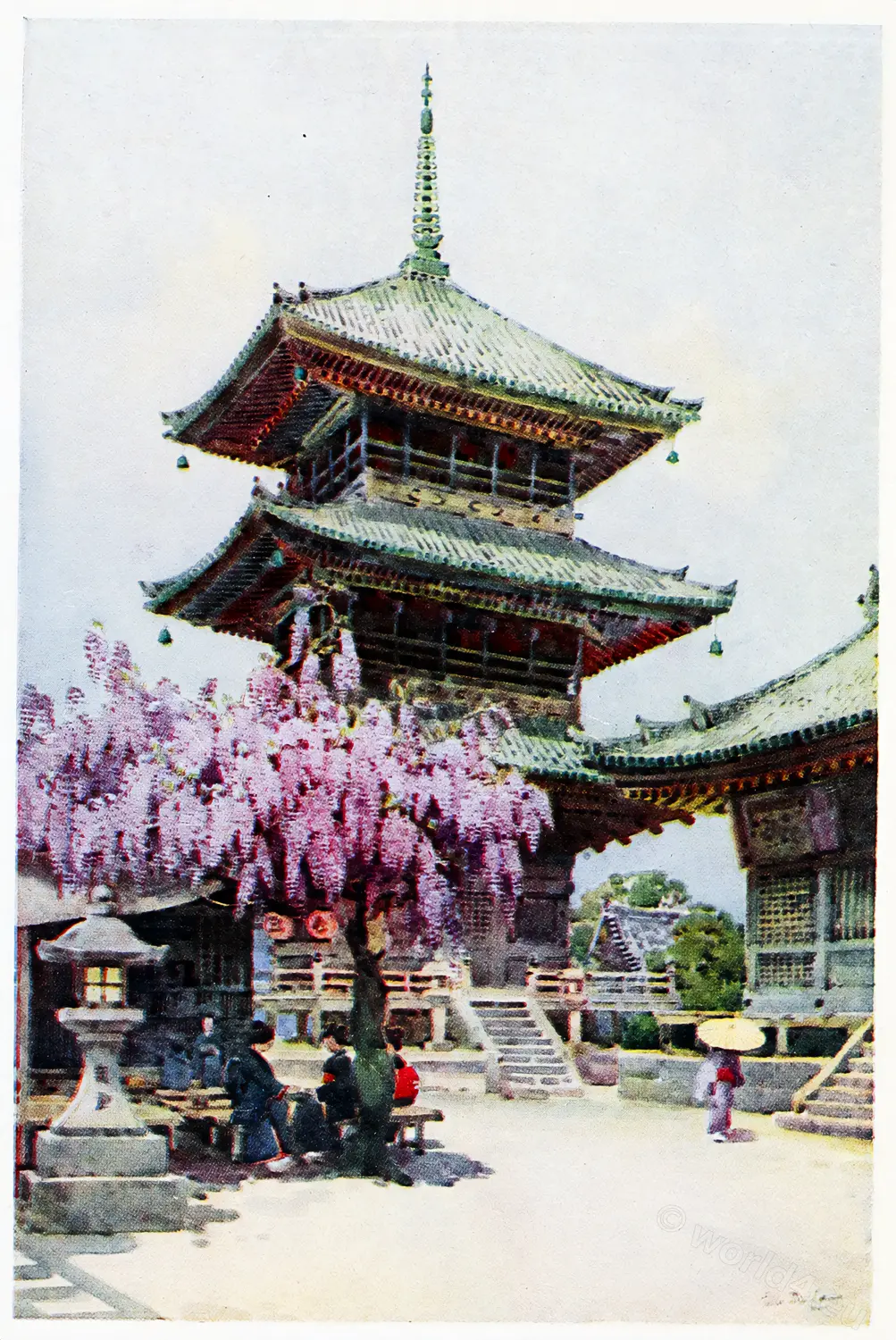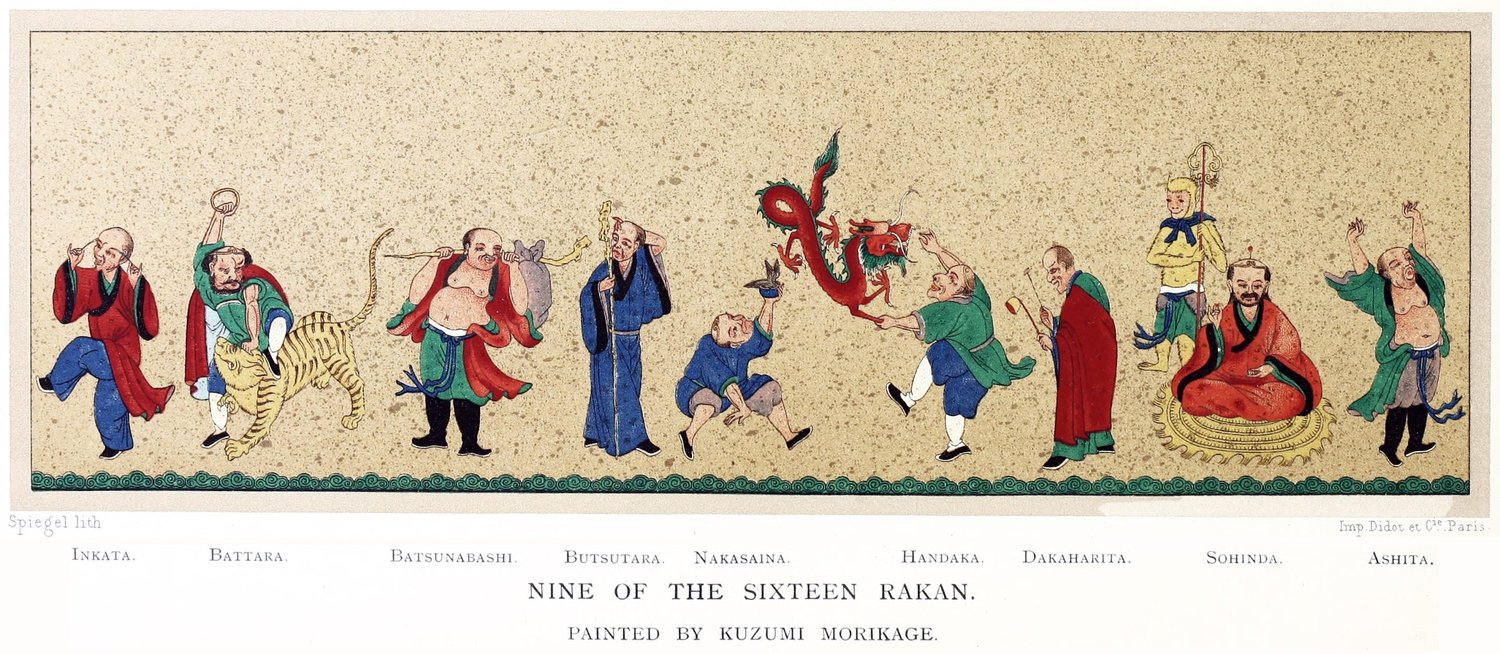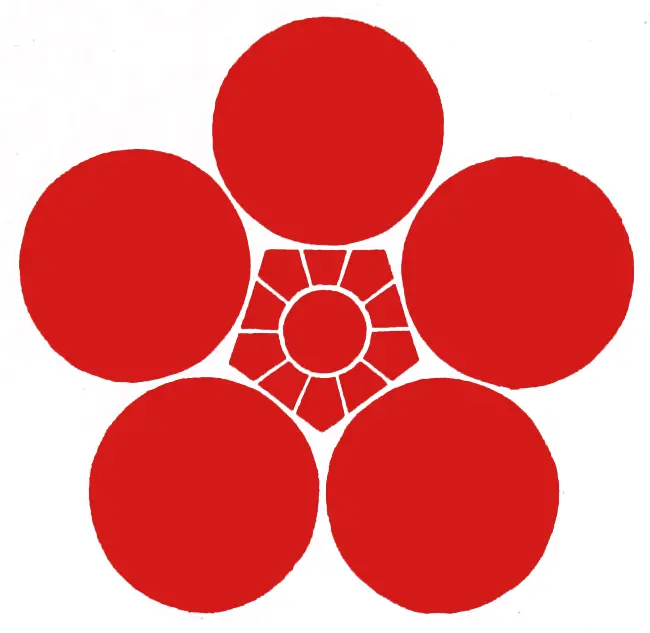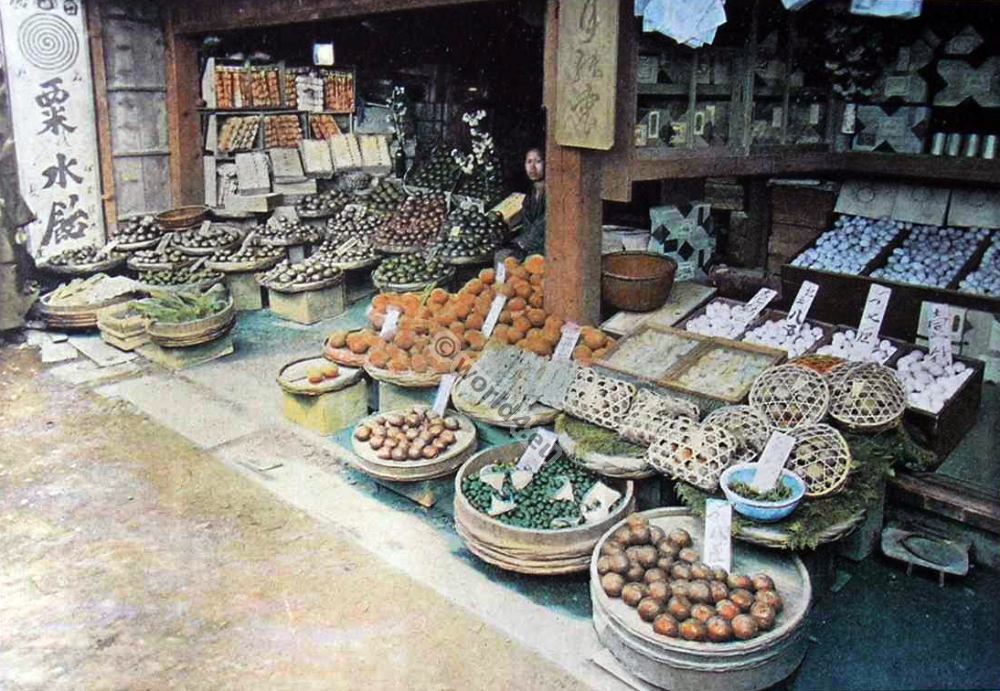PLATE XXX.
KAGA CERAMICS (Kutani factories)
Ko-kutani (old Kutani, 古九谷), from the 17th and early 18th centuries.
Ao-kutani also Saikō-Kutani (Revival Kutani), from the resumed production in the 19th century.
Large bowls of late and ancient period
by George Ashdown Audsley and Lord James Bowes.
A — Ao-kutani also Saikō-Kutani. Large bowl (sara) of late period. Polychromatic Kaga Ware.
Since the Vienna Exhibition numerous specimens of a highly decorated ware, bearing the Kutani mark, have been secured by collectors at home and abroad; these differ in some respects from what was originally believed to be the style universally adopted by the Kaga artists.
We have selected for illustration a bowl which, in our opinion, is thoroughly representative of the former class. In design and in the arrangement of the decorative features it is strictly Japanese; and, indeed, more characteristic of native art than are the generality of the red and gold works. The coloured enamels used are brilliant in tint, and are laid on with great body, so much so as to impart a decided relief to the ornamentation ; this is particularly the case with the white enamel, the high relief of which is cleverly represented by our artist.
The subject is a group of kiku, hagi, and ominameshi, with a pair of cocks fighting; the back of the dish is covered with green enamel, and decorated with representations of a bat (komori), the loquat (biwa), and pumpkin vine (kabochadzuru).
The pâte, drab in tint of the pale bowl is apparently a type of stoneware covered with a thin, light-coloured lacquer, with all the colouring overlying the glaze. The ornamentation is characteristic of Japanese art in every respect and is executed in the free and uninhibited style typical of Japanese artists. Diameter, 16 inches.
This specimen bears the Kutani mark (Ku-tani). Kutani, the name of the district in the province of Kaga in which the ware was made.
B — Ko-kutani (九谷焼). Large bowl (sara) of ancient Kaga Ware,
of rather crude manufacture, and decorated with archaic figures and conventional ornaments in dull red only.
It is decorated in the centre with a group of Chinese sages examining a kakemono, and behind them is a kobachi from which the burning perfume issues; around this centre is a broad border occupied by three medallions, containing similar figures, and by curious conventional patterns; the back of the dish is ornamented with several dragons and a border of vigorous design. The whole of the decoration is executed in deep, dull red. Some difference of opinion has been expressed as to the origin of this piece, but the balance inclines to this classification.
This is an interesting piece, being a well-preserved and important specimen of the oldest Kaga ware with which we have met. It was evidentlv made long previously to the introduction of gilding on pottery, and, indeed, before the Kutani artists arrived at the point of perfection in their art which is so frequently displayed in the best specimens of their later works.
With our imperfect knowledge of Japanese Ceramic Art, we dare not presume to fix a date to such a specimen as this, but if outward evidences go for anything, this piece is many centuries old. Diameter, 17 inches. In the possession of James L. Bowes, Esq..
Source: Keramic art of Japan by George Ashdown Audsley (1838-1925); Lord James Bowes (1834-1899). London : H. Sotheran & co. 1881.
Discover more from World4 Costume Culture History
Subscribe to get the latest posts sent to your email.

